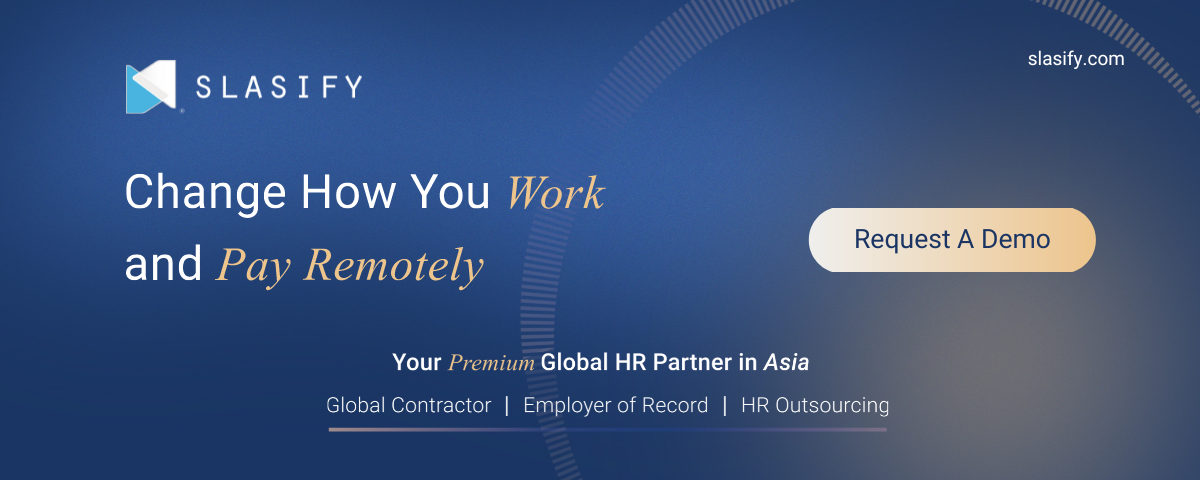Employer Contribution in Japan
The Land of the Rising Sun, renowned for its rich culture and technological advancements, has disciplined employers fulfilling their obligations through various social security contributions. These contributions help fund a multitude of social protection schemes, including Health insurance, Long-term Care insurance, Welfare Pension insurance, and Child Allowance premiums, among other things.
Calculated based on the employees’ salaries up to certain capped amounts for each insurance type, these contributions provide comprehensive coverage and support for healthcare, retirement, and employment needs. This commitment to social security ensures the well-being and financial security of employees, reflecting Japan’s dedication to maintaining a robust social safety net.

In general, the rates below are applicable to both domestic residents and foreign individuals, provided they are employed by a Japanese employer, including a branch of a foreign corporation within Japan.
Employer Payroll Contribution
| Rates | |
| Health Insurance (Tokyo)* | 5% |
| Long-Term Care Insurance | 0.91% (exclusively for employees who are at least 40 years old) |
| Welfare Pension Insurance | 9.15% |
| Child Allowance Premium | 0.36% |
| Unemployment Insurance | 0.95% |
| Work Injury | 0.25%–8.8% (varies according to industry) |
| Total | 15.71% – 25.17% |
Employee Payroll Contribution
| Rates | |
| Health insurance (Tokyo)* | 5% |
| Long-Term Care Insurance | 0.91% (exclusively for individuals who are at least 40 years old) |
| Welfare Pension Insurance | 9.15% |
| Unemployment insurance | 0.6% |
| Total | 14.75% – 15.66% |
*Health insurance rates vary between prefectures.

Employees’ Health Insurance
The Employees’ Health Insurance (EHI) or Kenkōhoken is a mandatory program enforced since 1927, and it is funded through contributions from both employers and employees. All employees in companies with 5 or more workers, including foreign nationals and part-time employees meeting the required conditions, must enroll in EHI. Moreover, unemployed or low-income dependent family members can also be included in the EHI coverage if they are registered residents of Japan.
In addition to the EHI and Long-Term Care Insurance covering salaried workers and their eligible dependents, the National Health Insurance (NHI)–Japan’s public health insurance system–provides coverage for non-salaried residents under 75 years old. Upon reaching the age of 75, both non-salaried and salaried individuals become insured under the Latter-Stage Elderly Healthcare System.
These insurances generally cover a significant portion of medical expenses, the limit of which increases for specific demographics based on their income. Excess medical costs beyond the household’s maximum monthly limit may also be eligible for reimbursement as determined by the insured person’s income and age.
It is worth noting that employers are required to submit employees’ EHI application dossiers within 5 days of the start of their employment to the relevant Japan Pension Service (JPS) branch, including that of their dependents where relevant, and pay the applicable contribution.
Employees’ Pension Insurance
The National Pension System is a mandatory public pension program designed for all registered residents of Japan aged between 20 and 59 years. This system classifies insured individuals into three categories:
| Category I | All registered residents aged 20 to 59 who do not belong to Category II or Category III. |
| Category II | Persons enrolled in the Employees’ Pension Insurance system or Mutual Aid Associations. |
| Category III | Dependent spouses of Category II insured persons, aged 20 to 59 years, residing in Japan or elsewhere. |
Salaried employees in the private sector fall under Category II, specifically under the Employees’ Pension Insurance (EPI) system, which was established following The Employees’ Pension Insurance Act of 1941. The rules and specific conditions for EPI are similar to that of EHI as the two funds coexist in tandem and are designed to safeguard the well-being of private-sector employees. To receive the Old-Age Basic Pension at the pensionable age of 65, beneficiaries must have made contributions for at least 10 years.
In addition to the Old-Age Pension, the system also carries provisions for early or delayed pension payments, disability pension for first- and second-grade disabilities, and multiple pension benefits for eligible surviving dependents in the event of an insured person’s death. Each of these benefits caters to different qualifying individuals and their qualifying conditions may vary.

Unemployment Insurance
The Unemployment Insurance, also known as shitsugyou hoken, is managed by Hello Work, the Japanese government’s Employment Service Center. It offers basic allowance for individuals who have left their job and are actively seeking re-employment, physically fit and living ordinarily. However, many people do not fall under this category, including full-time homemakers, full-time students, and those who have their own businesses.
To qualify for employment insurance benefits, the applicant needs to have insurance coverage for at least 12 months during the last two years before their termination. In certain cases, such as employer bankruptcy, dismissal, or non-renewal of a limited-term work contract, the requirement is reduced to at least six months in the last year before termination. This same reduced requirement applies to special insurance options like Continuously Insured Elderly Person or special lump sum payments. Notably, the basic allowance received under this benefit is based on the salary received in the last 6 months prior to the termination date.
Work Injury
As per Articles 75–82 of the Labor Standards Act, employers are responsible for providing essential medical treatment in the event of a work-related injury or illness. Furthermore, employers must continue to pay their absent employees at 60% of their average wage unless gross negligence is proven as the cause of their condition. In cases where the employee’s recovery period extends beyond 3 years, employers may compensate their employees with an amount equivalent to 1,200 days of average wage to discontinue their obligations. It is also very important to note that employees who suffer from any disabilities or fatalities are entitled to additional compensation.
The mandatory Workers’ Accident Compensation Insurance covers on-the-job accidents, diseases, disorders, and death. Employers covered by this insurance will be able to share the burden of their liabilities from their compensatory obligations to their employees suffering from work-related injuries or diseases. The minimum guaranteed basic daily benefit amount under this insurance is subject to yearly revisions based on the employee’s age group and, in cases where work accidents lead to deaths, surviving family members can also receive determined lump-sum payments as compensation.
Slasify: Enabling Payroll Excellence in Japan
As we conclude our comprehensive exploration of employer contributions in Japan and the wide array of benefits they encompass, it is crucial to acknowledge the distinctive payroll landscape that prevails within the country. Successfully navigating this landscape and ensuring compliance requires the invaluable guidance of industry experts.
Slasify specializes in providing tailored and comprehensive payroll solutions for businesses operating in Japan. Our team of professionals boasts extensive knowledge and expertise in understanding Japan’s intricate labor regulations, allowing us to seamlessly streamline your payroll processes. Don’t hesitate to connect with us today to harness our experience and expertise, and unlock the convenience of hassle-free payroll management in Japan.
Slasify is a one-stop platform offering Global Payroll, Employer of Records (EOR), and HR Outsourcing functions for the remote working generation. Our dedication to Diversity, Equality, and Inclusivity (DEI) and a proven track record with Forbes Top 100 Companies make us your ultimate payroll partner. Join us on a global HR journey, where we cater to your needs across 150+ countries. Unlock HR solutions tailored to you – Book a free consultation below!




